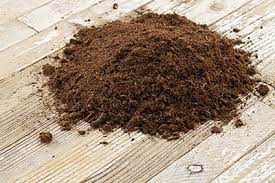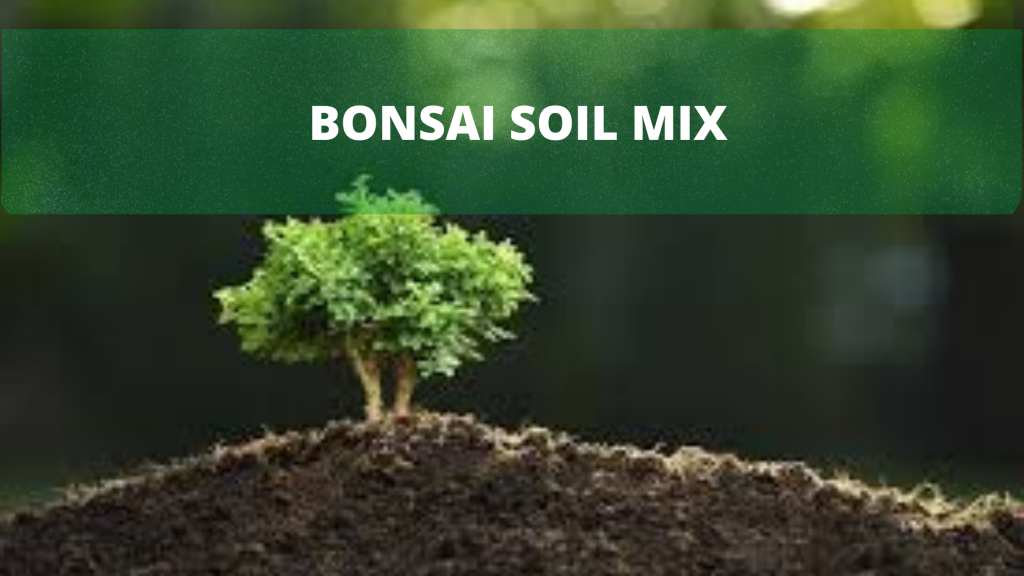Bonsai Soil Mix
The bonsai soil mix is the most important part of your bonsai’s health. It’s what sustains it, giving it nutrients and oxygen.
But there are many different opinions on what should be in a good bonsai soil – some people prefer to have only natural elements while others use commercial products for convenience.
I will go through the various ingredients that can be used in making a great bonsai potting soil, as well as how they affect the overall quality of care for your plant.
What’s in a bonsai soil mixture?
Bonsai soil is similar to regular potting soil in that it contains organic components like peat moss, bark, shredded wood and composted plant material.
These are mixed with inorganic components like grit (decomposed granite), perlite and vermiculite – materials which help improve drainage.
The difference is much greater than the similarities, however. It is the ratios of each of these components that determine whether or not a soil is suitable for growing bonsai.
Organic material ~ 60-70%

This provides nutrients to the plant – its food supply. The organic content in bonsai mix helps provide essential elements needed by most plants to stay healthy and to grow properly.
Inorganic material ~ 30-40%
This improves drainage and provides aeration. The inorganics in bonsai soil allow water to drain through the soil quickly, making sure that it’s never too wet or too dry for your plant.
Adding perlite to a mix will also create more oxygen spaces between particle, which is beneficial for root growth.
So what’s the best bonsai soil mix?
There’s no such thing as ‘one size fits all’, so try experimenting with different mixes to find out what works best for you and your plants.
It comes down to four main factors: water retention, drainage, weight and cost. These can be balanced out by varying the mix ratio of organic and inorganic components.
If you live in a region where it’s very humid, try increasing the amount of peat moss and decreasing perlite to decrease drainage and improve humidity retention.
When drainage is not an issue and if your plant prefers moist conditions, increase the perlite and decrease the peat.
Here are four bonsai soil mix recipes to help you get started:
Bonsai Soil #1 – The Traditional Mix Peat moss ~ 50-60% Decomposed Granite or pumice grit ~ 20-30% Sand, fine grained > 10% Baked clay ball (yep, from your local pottery supply store!)- around 10% *optional
Recipe Bonsai Soil #2 – Best Suited for Pines and Junipers Sphagnum moss ~ 70% Baked clay ball* ~ 20-30% Decomposed granite or pumice grit sand, fine grained > 10%
Bonsai Soil #3 – Best Suited for Tropical Plants Peat moss ~ 60-70% Vermiculite or perlite > 30%
Recipe Bonsai Soil #4 – For Seedlings and Young Shohin Sphagnum moss ~ 55-60% Baked clay ball* ~ 25-30% Decomposed granite or pumice grit sand, fine grained > 15%
Peat moss is a type of partially decomposed plant matter that adds texture and water-holding capabilities to bonsai soil. In the western world it is usually obtained from peat bogs. It must be allowed to dry out thoroughly before use in order to avoid root rot.

Bark is made from the wood of dead trees and decomposes to add organic material. It also provides a decorative look, which can be quite nice when added sparingly to a mix. Shredded mulch bark will provide an even greater amount of organic material while maintaining good drainage.
Coconut coir is another partially decomposed plant matter that has recently become popular in bonsai soil mixes. It is found in compressed blocks that expand when soaked, and it’s sustainable and environmentally friendly to boot!
Pine bark is another addition traditionally used by bonsai enthusiasts. It adds organic material, retains water well and drains quickly, and also has a nice, dark colour that will complement your bonsai.
Perlite is a sterile volcanic glass that adds weight to a mix and improves drainage. It comes in two particle sizes – coarse and fine – which work best when added separately for best results.
Vermiculite is another inert material made from mica-like minerals that expand when heated. They add weight and improve drainage, but they also add a bright white colour to the mix which is not always desirable.
Baked clay balls are made from fired clay and are used in mixes for tropical plants that require high humidity. It holds water well, reduces water loss due to evaporation and slowly releases water to the plant over time.
Pumice is another volcanic material that adds weight and porosity to a mix, improving drainage. It also has a very attractive dark-grey colour which can be used to create contrast in your bonsai pot or tray.
What is akadama bonsai soil mix?

Bonsai soil like Akadama is a type of baked clay ball obtained from Japan. They are very popular bonsai soil ingredients used to make bonsai soil mix for pines, azaleas and similar plants.
Akadama Bonsai Soil can be expensive outside of Japan though, so try using other materials like baked clay balls instead.
Hoffman bonsai soil mix
This is a mix of 60% sand, 30% peat and 10% bark. If you live in a humid region or if your trees prefer moist soil conditions, increase the amount of sand instead of the peat moss, as it has an excellent water retention capability for such dry regions.
Bonsai soil Home Depot
is a mix of 60% peat, 25% bark and 15% perlite. It is recommended for trees that require extra drainage such as pines.
Kinman’s Bonsai Soil
is a mix of 70% peat and 30% coarse vermiculite. While this bonsai soil mix is fairly heavy, it provides excellent drainage, which is essential for some types of bonsai.
Bonsai soil Green Circle Growers
This is a mix of 55% peat, 45% pumice. It is suited for seedlings and young trees that require high humidity. Pumice will gradually decompose and add organic material to the mix.
Let’s look at specific bonsai trees and see what soil mix they prefer
Ficus bonsai soil mix

Ficus trees prefer moist soil conditions, so it’s best to mix together equal parts of coarse sand and either peat moss or coconut coir.
Bonsai soil mix Juniper
They are very tolerant of dry conditions, so you can get away with mixing 60% coarse sand, 30% perlite and 10% potting soil. I
f you live in a humid region or your trees prefer moist soil conditions, increase the amount of coarse sand instead of perlite and potting soil, as it has an excellent water retention capability for such dry regions.
Bonsai soil mix for Japanese maple
These bonsais are native to temperate regions, so their soil must be kept moist during the growing season and dry during the winter months. A simple potting soil mixed with 30% coarse sand will do the trick.
Bouganvillea bonsai soil mix

Bouganvillea prefer dry soil conditions year round. Mix together equal parts of coarse sand and either peat moss or coconut coir.
Bonsai soil mix near me? Let’s go country by country.
Bonsai soil mix Canada
The best is a mix of 60% peat, 25% bark and 15% perlite. It is recommended for trees that require extra drainage such as pines.
Bonsai soil Mexico
A good mix for Mexico conditions is composed of 45% washed gravel, 30% composted bark or soil, 20% coarse sand and 5% Perlite. It is recommended for plants that prefer well-draining soil conditions.
Bonsai soil mix UK
It’s cooler in the UK so a mix of 60% peat, 25% bark and 15% perlite is best. It is recommended for trees that require extra drainage such as pines.
Bonsai soil mix USA
A varied country but in general the mix is composed of 55% peat, 45% pumice. It is suited for seedlings and young trees that require high humidity. Pumice will gradually decompose and add organic material to the mix.
Bonsai soil mix India
The best for India is composed of 45% washed gravel, 30% composted bark or soil, 20% coarse sand and 5% Perlite. It is recommended for plants that prefer well-draining soil conditions.
Bonsai soil mix Australia
The best for Australia conditions is a mix of 60% peat, 25% bark and 15% perlite. It is recommended for trees that require extra drainage such as pines.
Bonsai soil China
China’s best is a mix of 60% peat, 25% bark and 15% perlite. It is recommended for trees that require extra drainage such as pines.
Bonsai soil mix South Africa

The best for South Africa is a mix of 65% polystyrene foam particles, 20% coarse sand and 15% perlite. It is recommended for most types of bonsai tree.
Bonsai soil mix New Zealand
New Zealand’s best is composed of 45% washed gravel, 30% composted bark or soil, 20% coarse sand and 5% Perlite. It is recommended for plants that prefer well-draining soil conditions.
Bonsai soil Bulgaria
Bulgaria mix is composed of 45% washed gravel, 30% composted bark or soil, 20% coarse sand and 5% Perlite. It is recommended for plants that prefer well-draining soil conditions.
Bonsai soil mix Phillippines
Phillippine’s best is a mix of 60% peat, 25% bark and 15% perlite. It is recommended for trees that require extra drainage such as pines.
Where to buy bonsai soil mix?
We have some great deals on bonsai soil mix at Amazon. Just click here
Conclusion
The bonsai soil mix is available in a variety of styles and types, but the most common are Akadama clay based.
These can be found at your local garden center or even online with relative ease.
Outlined above we discuss:
- what is bonsai soil mix
- what is the best bonsai soil
- hoffman bosai soil mix
- akadama bonsai soil mix
- where to buy bonsai soil
- bonsai soil to suit different countries
Hope you enjoyed the article. If you haven’t read our free BONSA system, please do so now.

